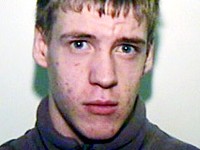The name Michael Hamer will now be added
to a list of children who have killed other youngsters.
His crime will be placed alongside those
of Mary Bell and more recently Jon Venables and Robert
Thompson.
The shock felt when a child lures another
away to their death never dissipates.
In 1968, Britain's youngest female killer
Mary Bell lured three-year-old Brian Howe and four-year-old
Martin Brown away from their homes on Tyneside and strangled
them.
Before she was caught, Bell, who
psychiatrists called "manipulative" and "dangerous", even
asked Martin's grieving family if she could see him lying
dead in his coffin.
The schoolgirl led police to Brian's body,
which she had slashed with razor blades and scissors.
Bell, the daughter of a Glasgow
prostitute, was found guilty of double manslaughter in 1968.
Her cold stare and apparent indifference
to the proceedings led people to label her "evil" and "a bad
seed".
She was released on licence after 12
years in jail, fell pregnant by a married man and raised her
child under a different name.
Public uproar at the lifetime court order
gagging the media from revealing her new identity
intensified when the killer later sold her story for £50,000
to a book publisher.
More recently, the brutal, premeditated
murder of two-year-old James Bulger by two 10-year-old boys
left Britain reeling and agonising over how society can
produce such damaged youngsters.
In November 1993, Venables and Thompson
coaxed the toddler from his mother's side in a Merseyside
shopping centre, battered him to death with bricks and an
iron bar, then left his body on a railway track to be cut in
half.
Thompson kicked the boy so hard in the
face the imprint of his metal shoelace loops were left on
his skin.
After being convicted of murder, the pair
spent eight years in youth custody before being released in
2001 with new identities.
During the trial, Justice Michael Morland
said they had committed "an act of unparalleled evil".
In 2003, 14-year-old Luke Mitchell
murdered his girlfriend, Jodi Jones, also 14.
He slashed her throat about 20 times,
tied her hands behind her back, stripped her and left her
mutilated body on a disused path in Dalkeith, Midlothian.
Mitchell, from Newbattle, led Jodi's
family to her butchered corpse while pretending to help look
for her.
He was detained for life in February last
year by Judge Lord Nimmo Smith, who said the brutal killing
may have been inspired by the work of Gothic rock star
Marilyn Manson.
The teenager was ordered to spend a
minimum of 20 years behind bars for Jodi's murder.
Brothers Danny and Ricky Preddie were 12
and 13 when they stabbed 10-year-old Damilola Taylor in the
leg with a broken beer bottle in November 2000.
Nigerian-born Damilola had been in
Britain only a few months when he fell foul of the bullying
brothers after walking home from the local library after
school.
He bled to death in a stairwell of the
run-down North Peckham estate, south London, as local
workmen tried to save his life.
The brothers were found guilty of
manslaughter in August this year after a re-trial and given
an eight-year youth custody sentence.
In August 1990, 11-year-old Richard Keith
battered three-year-old Jamie Campbell to death with rocks
before throwing him into a river in Drumchapel, Glasgow.
He was convicted of culpable homicide at
the High Court in Edinburgh because of his age and sent to a
residential school, Kerelaw secure unit, in Stevenston,
Ayrshire.
It emerged later that Keith had attacked
another child three weeks before killing Jamie.
He had tied up Thomas Garrity, also
three, beaten him and threatened to kill him. Keith was
released in January 1999.

